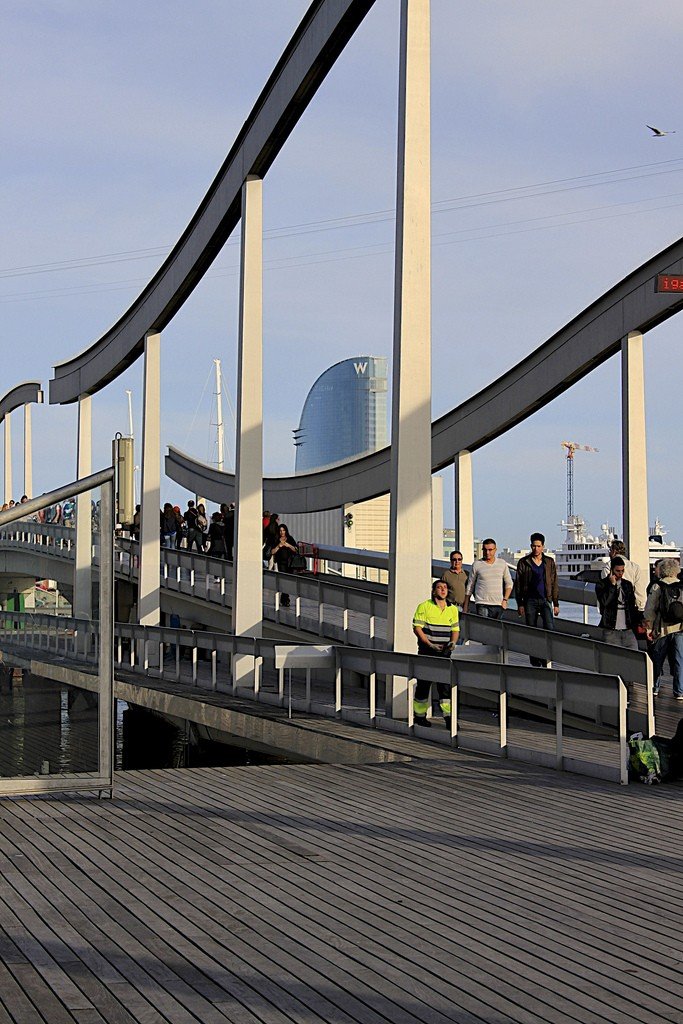Old Port of Barcelona (Port Vell de Barcelona)
Barcelona’s Old Port was completely rebuilt in the 1990s and is now home to many boat docks, museums, restaurants and observation decks. Here, a glorious past, much of it linked to Barcelona’s maritime history, is juxtaposed with a turbulent present. Adjacent to the port are Aduana (customs), Capitania General (port authority) and Gobierno Militar (military department).










General information
The Columbus Monument is no longer the tallest coastal structure, but it’s a great place to start your tour. Take the elevator up to the 50-meter height to view the harbor. Ahead is the pier for the trimarans (Las Golondosrinas) that shuttle to the Olympic Village. There are also the world’s largest medieval shipyards, a unique complex of vaulted buildings dating back to the 13th century around a giant central courtyard that housed entire galleons. Fortunately for Barcelona, the shipyards were saved from destruction at the last moment and now, in their renovated state, provide a beautiful backdrop for the Maritime Museum.
.Ship models, navigational instruments and maps illustrate the seafaring history and maritime traditions of Catalonia. The exhibition gives a broad picture of the development of seafaring right up to submarines, and then immerses you in a virtual maritime show. Afterwards, you can sit in a café or restaurant under the orange trees in the courtyard.
Another example of successful renovation was the Museum of Catalan History, where exhibits are presented chronologically, using interactive media, information boards, maps, audiovisual devices, photographs and maquettes. All captions are in Catalan, so pick up a brochure with a translation at the ticket office. The exhibition occupies two renovated floors of the Palau del Mar (1900), the former warehouses on Barceloneta’s wharf. The most interesting section is on the second floor, which tells the story of the emergence of man in Catalonia, Iberia and ancient Rome. The history of the Moorish invasion is also summarized here, as well as a wealth of information about the Middle Ages and the Habsburg era. The third floor is dedicated to industrialization, city building and the socio-political cataclysms of the 20th century, up to the adoption of the new constitution of 1978.The café on the terrace of the 4th floor offers fabulous views of the port area.
.
A new road, the Rambla de Mar, runs from the Columbus Monument to Port Vel and the Mol d España promenade. It is a large, redeveloped neighborhood with promenades entirely occupied by entertainment venues. The Maremagnum shopping center is complemented by the Aquarium, which presents the underwater world of the Mediterranean. Sharks can be viewed in the tunnel.
.Barceloneta (Little Barcelona) lies between the main port and the Olympic Village. It is a network of 18th century streets where seafarers and fishermen traditionally settled. There are some very picturesque places to get to the beaches and the cable car. For 4 kilometers to the north, sandy beaches stretch along the coast. At the southern end, next to some neglected harbor buildings, is Torre de Sant Sebastia, from where the Transbordador Aeri cable car can take you up to Montjuïc.
.